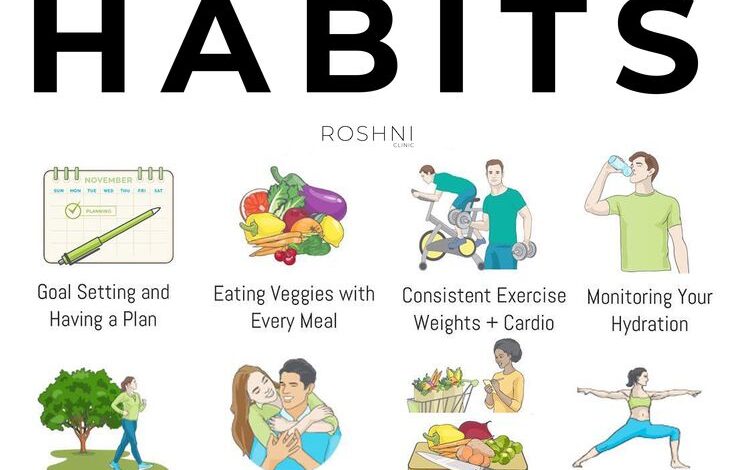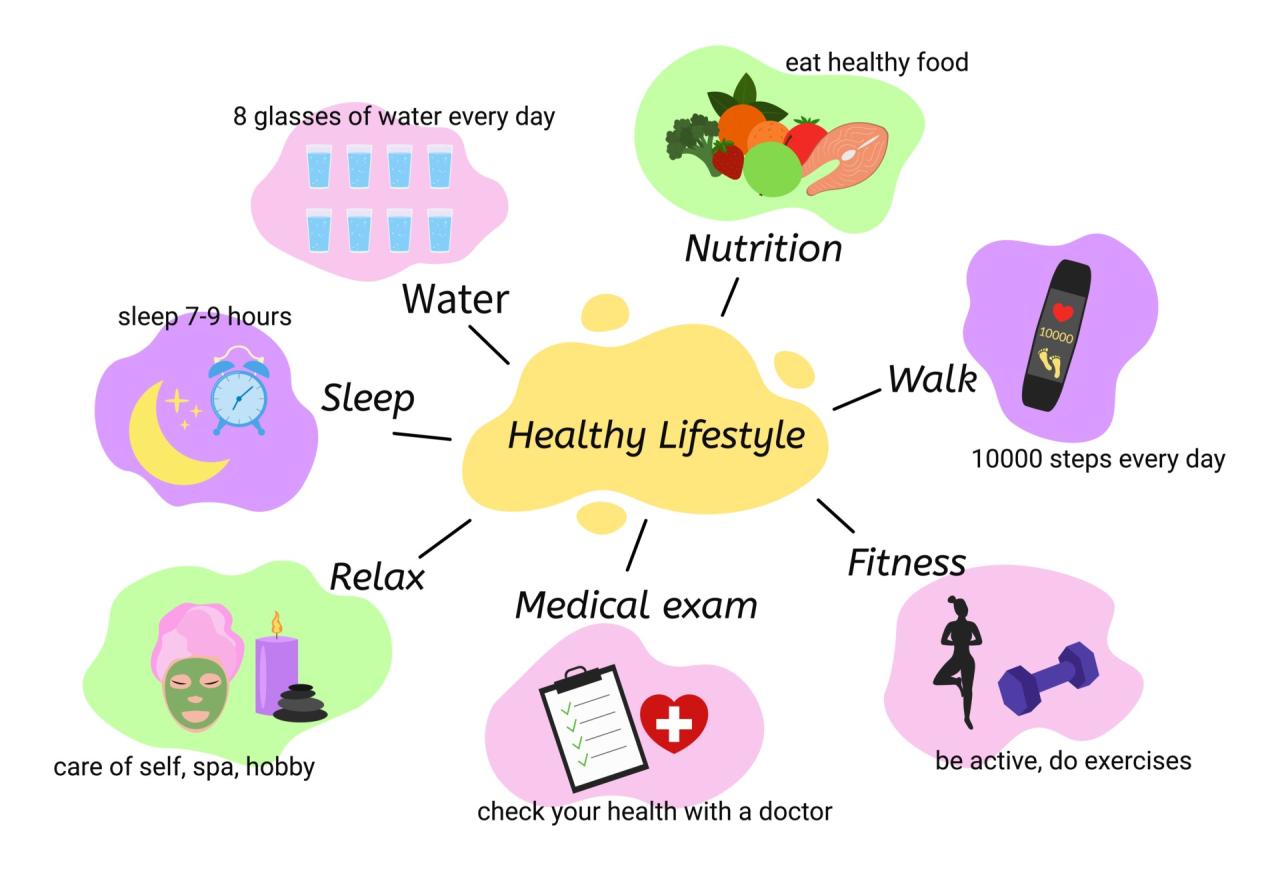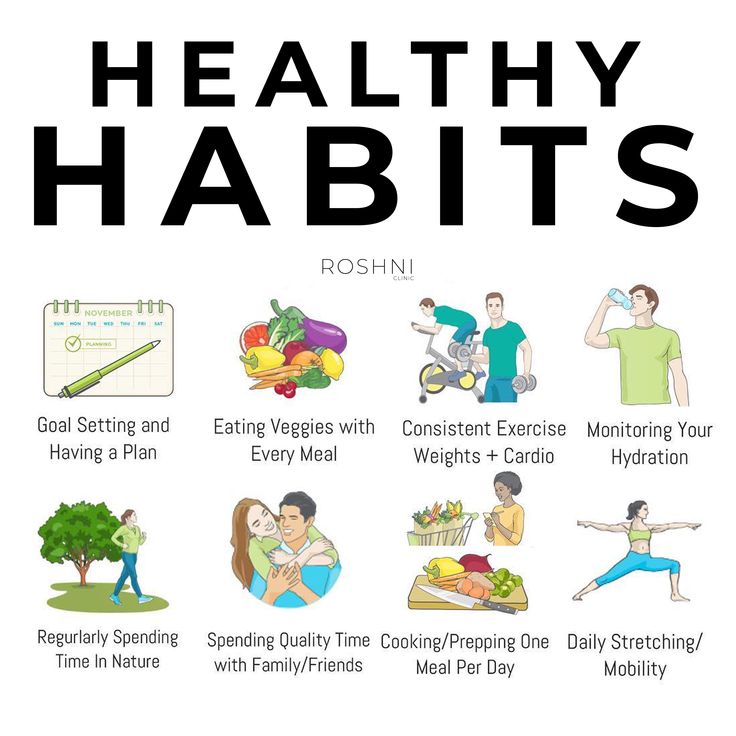
5 Steps to Form Healthy Habits That Actually Stick
5 steps forming healthy habit actually sticking – 5 Steps to Form Healthy Habits That Actually Stick: We all know that forming healthy habits is essential for a fulfilling life, but the real challenge lies in making those habits stick. It’s easy to get excited about a new routine, but the enthusiasm often fades, leaving us back at square one.
This article explores the science behind habit formation and provides a practical five-step framework to help you create lasting positive changes in your life.
This article breaks down the process of habit formation, starting with understanding the science behind it. You’ll learn how your brain forms habits, the stages involved, and how to leverage this knowledge to your advantage. We’ll then delve into choosing the right habits, setting yourself up for success, and the importance of consistency.
Finally, we’ll address the common pitfalls that can derail your efforts and discuss strategies for making your new habits truly stick.
Understanding Habit Formation
Habits are automatic behaviors that we perform with little to no conscious effort. They are ingrained in our brains and become almost second nature. Understanding how habits form is crucial for building healthy habits and breaking unhealthy ones.
The Science Behind Habit Formation
The formation of habits is a complex process involving the brain’s reward system and the basal ganglia. The basal ganglia is a group of structures deep within the brain that plays a key role in habit learning and execution. The habit loopis a neural pathway that explains how habits are formed and executed.
Building healthy habits that stick takes time and effort. It’s about finding the right balance between motivation and consistency. One common goal is to “eat less, move more” for weight loss, but turning this into an actionable plan can be tricky.
If you’re struggling with this, I recommend checking out this article on how to turn eat less move more into a useful weight loss action plan. Once you have a solid plan, remember the 5 steps: set realistic goals, track your progress, find support, reward yourself, and be patient.
It’s a journey, not a sprint!
It consists of three main components:
- Cue:A trigger or signal that initiates the habit. This could be a specific time, place, or emotion.
- Routine:The behavior or action that is performed in response to the cue.
- Reward:The positive outcome or feeling that reinforces the habit. This could be a feeling of satisfaction, pleasure, or relief.
When a cue is encountered, it triggers the routine, which then leads to the reward. Over time, the connection between the cue, routine, and reward becomes stronger, making the habit more automatic. For example, imagine someone who always grabs a cup of coffee after waking up.
The cue is waking up, the routine is making coffee, and the reward is the taste and energy boost. This habit is reinforced every morning, making it almost automatic.
The Four Stages of Habit Formation
The formation of a habit can be broken down into four stages:
- Cue:This is the trigger that initiates the habit. It could be a specific time, place, emotion, or another behavior.
- Routine:This is the actual behavior or action that is performed in response to the cue.
- Reward:This is the positive outcome or feeling that reinforces the habit. It could be a feeling of satisfaction, pleasure, or relief.
- Belief:This is the belief that the habit is beneficial and worth continuing. It is the conscious decision to continue the habit even when there are challenges.
For instance, consider the habit of exercising regularly. The cue could be the end of the workday, the routine could be going for a run, the reward could be the feeling of accomplishment and endorphin rush, and the belief could be the understanding that exercise is good for health.
Choosing the Right Habit

You’ve decided to embark on the journey of habit formation, but the first step is to choose the right habit. This is crucial because the habit you choose will determine your success and the impact it has on your life.
The right habit is one that aligns with your personal values and goals, making it more likely you’ll stick with it. It should also be something you genuinely want to do, not something you feel obligated to do.
Building healthy habits that stick requires consistent effort, and one of the biggest hurdles is procrastination. It’s easy to put off what we need to do, but the good news is that there are proven strategies to combat this. Check out these 5 tips for squashing procrastination to gain control over your time and build those healthy habits you’ve been wanting.
Starting Small and Focusing on One Habit at a Time
Starting small and focusing on one habit at a time is essential for success. Trying to change too many things at once can be overwhelming and lead to burnout.
“Focus on one habit at a time, and make it a success before moving on to the next.”
Building healthy habits takes time and effort, and it’s important to make changes gradually. One of the key steps is to identify triggers that lead to unhealthy choices. For example, if you’re trying to eat healthier, you might ask yourself, “Can pasta be healthy?” This article explores that question, and it’s a good reminder that healthy eating isn’t about eliminating entire food groups, but making smart choices within them.
Once you’ve identified your triggers, you can start developing strategies to manage them, like finding healthier alternatives or creating a support system.
When you choose a habit, commit to it for a specific period, like 30 days. This allows you to establish a routine and see tangible results. Once you’ve successfully incorporated that habit into your life, you can move on to the next one.
Examples of Healthy Habits
Healthy habits can enhance various aspects of your life, from physical health to mental well-being and productivity. Here are some examples:
Physical Health
- Regular Exercise:Engaging in regular physical activity improves cardiovascular health, strengthens muscles, and boosts energy levels. Aim for at least 30 minutes of moderate-intensity exercise most days of the week.
- Healthy Eating:A balanced diet rich in fruits, vegetables, whole grains, and lean protein supports overall health. Limiting processed foods, sugary drinks, and excessive saturated and unhealthy fats is crucial.
- Adequate Sleep:Getting enough sleep is vital for physical and mental well-being. Aim for 7-9 hours of quality sleep each night.
Mental Well-being
- Mindfulness Meditation:Regular mindfulness practice can reduce stress, improve focus, and increase self-awareness. Even a few minutes of meditation each day can make a difference.
- Gratitude Journaling:Writing down things you’re grateful for can shift your focus to the positive aspects of your life, boosting happiness and well-being.
- Spending Time in Nature:Connecting with nature has been shown to reduce stress and improve mood. Spending time outdoors, whether it’s a walk in the park or a hike in the woods, can have a positive impact on your mental health.
Productivity
- Time Management:Effective time management techniques, such as prioritizing tasks, setting deadlines, and using to-do lists, can increase productivity and reduce stress.
- Deep Work:Dedicating focused, uninterrupted time to challenging tasks can significantly improve productivity and lead to higher-quality work.
- Learning a New Skill:Continuously learning and acquiring new skills keeps your mind active, expands your knowledge, and can enhance your career prospects.
Setting Up for Success

You’ve identified the habit you want to cultivate and have a good understanding of how habits work. Now, it’s time to create a plan that will set you up for success. This stage is about turning your intention into action, ensuring you have the right tools and strategies to make your new habit stick.
Creating a Detailed Plan
A detailed plan is crucial for building a new habit. It provides a roadmap to follow, outlining the specific steps you need to take and when. This helps you stay focused and motivated. Here’s how to create a detailed plan:
- Identify your triggers:Triggers are the cues that prompt your desired behavior. For example, if you want to drink more water, your trigger could be the alarm clock in the morning.
- Define your desired behavior:Be specific about the action you want to take. For instance, instead of saying “drink more water,” define it as “drink two glasses of water before 10 a.m.”
- Choose a time and place:Determine the best time and place to perform your new habit. Consistency is key.
- Set a realistic frequency:Start small and gradually increase the frequency as you build momentum. For example, you might start with one glass of water before 10 a.m. and then gradually increase it to two glasses.
- Track your progress:Regularly monitor your progress to stay motivated and identify areas for improvement. You can use a journal, a habit tracker app, or simply mark a calendar.
Setting Realistic Goals and Expectations, 5 steps forming healthy habit actually sticking
It’s essential to set realistic goals and expectations to avoid discouragement. Don’t aim for perfection; focus on consistency.
- Start small:Begin with small, achievable goals and gradually increase the intensity or frequency as you gain confidence.
- Be patient:Habit formation takes time. Don’t expect overnight success. Be patient with yourself and celebrate your progress along the way.
- Embrace setbacks:It’s normal to experience setbacks. Don’t let them derail your progress. Simply acknowledge them, learn from them, and get back on track.
Overcoming Common Challenges
Everyone faces challenges when trying to build a new habit. Here are some common challenges and strategies for overcoming them:
- Procrastination:Break down your habit into smaller, more manageable steps. Reward yourself for completing each step to maintain motivation.
- Lack of motivation:Remind yourself of the benefits of your new habit. Visualize the positive outcomes and how it will improve your life.
- Lack of time:Schedule your new habit into your day, just like any other important appointment. Make it a priority.
- Lack of support:Find a support system, such as friends, family, or a support group, who can encourage you and hold you accountable.
End of Discussion: 5 Steps Forming Healthy Habit Actually Sticking
Forming healthy habits isn’t about willpower alone; it’s about understanding the psychology behind change and taking a strategic approach. By following these five steps, you can cultivate habits that not only improve your well-being but also become an integral part of your daily life.
Remember, consistency is key, and even small steps forward can lead to significant transformations. Embrace the journey, celebrate your progress, and enjoy the positive impact of your newfound habits.






